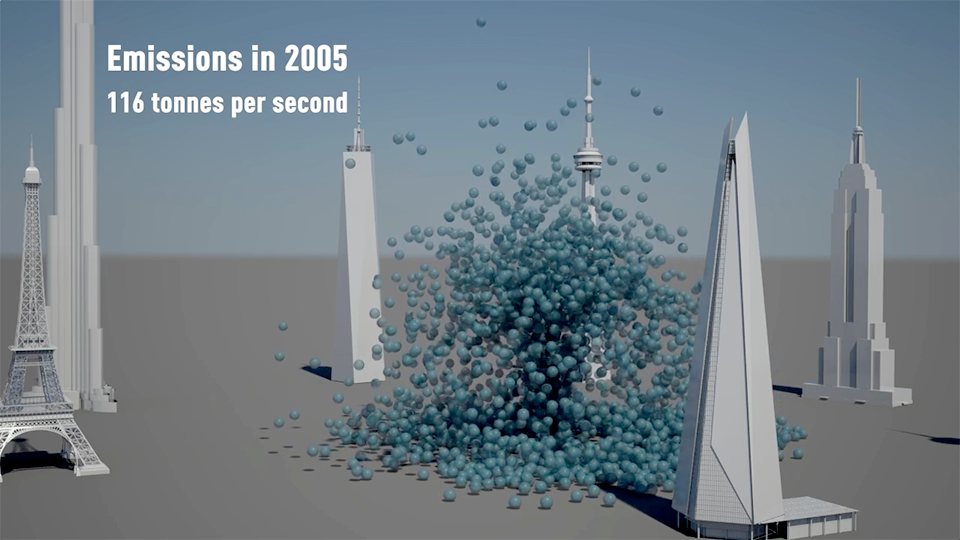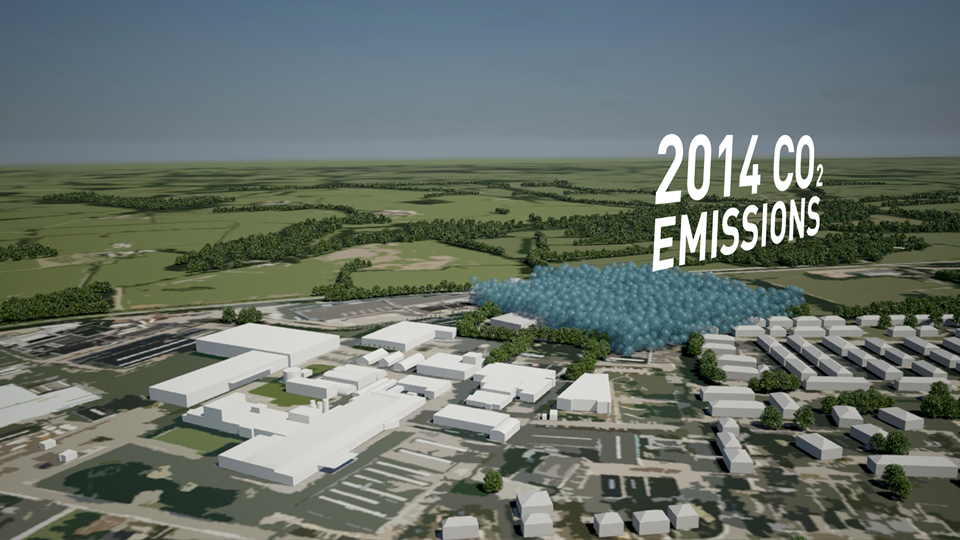Five years on, our far-fetched idea of forming a business to visualise carbon emissions and other invisible stuff is developing at a pace. What gives me real satisfaction is that the range of clients is so extensive – campaigners, universities and corporations. Each has a story to tell – and the narratives speak of both challenge and opportunity.
In the last six months we have created visuals for the Carbon Majors project. This has included the novel concept of showing drink cans branded with fossil fuel company names that illustrate precisely how much carbon dioxide is in a typical small room as a consequence of these companies’ extractions. At the end of a recent conference presentation at reCampaign in Berlin we measured the room and calculated the volume (the room contained 16 ‘Chevron cans’).
Adam Nieman at reCampaign, Berlin, March 2014
This audience, primarily of campaigners, was focusing on the ‘bad news’ stories, continuing to address a discrepancy between industrial ‘business-as-usual’ and the global scientific consensus on the dangers of continuing to rely on fossil-fuel based power and transport.
Since seeing the picture, I cannot get the Coke can from my head. More
Dannie Quilitzsch, participant at reCampaign
At the other end of the spectrum, we have been working with forward-thinking companies to see the benefits in being transparent with data and sharing the carbon reductions, the ‘good news’ stories of their products or services, with employees, customers and others.
We have started to produce useful imagery for Interface, the carpet tile manufacturer and pioneer in corporate sustainability, and we have created a short animation to help an international dealer network understand the ‘carbon neutrality’ of a well-known global brand.
Infographics can make an abstract subject concrete – lets viewers put their hands around it. More
Andrea Ovans, Harvard Business Review blog
Other current projects for businesses include an exciting project for Wood for Good, a campaign working on behalf of the timber industry in the UK, and an employee engagement project where we have created image sets, animations and a web interface to show actual volumes of CO2, water and other invisibles associated with specific groups of people in the client organisation.
The need to ‘see the invisible’ is important for all of us, not just one segment of society. Therefore, it is great to see education institutions like the University of Cambridge commissioning work from us too – ensuring that this form of literacy is developed through the industries of the future.
I believe that we need to balance the ‘bad news’ stories that show how we are critically changing the atmosphere of the planet, with the ‘good news’ stories that show the way forward to a more sustainable future.
Continuing to have a broad range of clients will help us do that.



